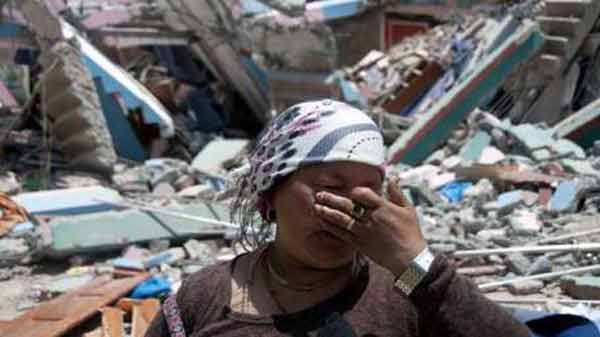
Dhaka, Bangladesh (BBN)-The two successive strong earthquakes and subsequent major aftershocks that hit Nepal in the last few days should serve as a wakeup call for Bangladesh, which sits on fault lines and thus prone to tremors, according experts here.
The experts have called on the authorities to boost disaster and emergency preparedness now instead of waiting for a major catastrophe similar to what happened in Nepal to hit Bangladesh, reports The Daily Times.
The April 25 earthquake in Nepal with magnitude 7.8 on the Richter scale, also shook Bangladesh, leaving at least four people dead and hundreds of others injured.
At least four fresh tremors were felt Tuesday afternoon in most parts of Bangladesh following another major earthquake that jolted Nepal.
Tuesday’s quake in Nepal also left one dead in Bangladesh.
Earthquake Disaster Risk Index of Stanford University ranks Bangladesh’s capital Dhaka among the 20 cities most vulnerable to earthquakes in the world.
Dhaka, a mega city with a population density of about 45,000 per square km, has little cause for comfort.
In the event of a major quake, the biggest problem would be how rescue vehicles could move around considering that roads in most parts of the capital are narrow.
One expert said that another alarming fact is that the city’s overburdened sewer system might rapture and could unleash deadly disease-carrying bacteria in the days after the quake.
Another grim scenario is that in the older parts of Dhaka, old and dilapidated buildings might collapse on the narrow streets, setting off severe roadblocks that could cause panic, chaos, and massive devastation not to mention deaths and injuries to people.
Immediately after an earthquake, there is the task of saving lives. Even calling in the Army with its vast manpower may not be effective because they have no expertise to cope with the situation, experts said.
Asadullah Khan, an expert on earthquake, said delay is the biggest challenge in any rescue effort after a strong earthquake.
Speed is definitely the number one requirement in any rescue operation, especially in an earthquake, said Khan.
Khan said that an earthquake itself does not kill people, adding that people are killed when they are buried alive in collapsed buildings or concrete structures.
Seismologists have said that Dhaka lies on fault lines that run through the Indian subcontinent.
And according to experts at least 50 percent of the buildings in the city cannot withstand strong earthquakes.
Structural engineers in Bangladesh are familiar with quake- resistant building designs and the National Building Codes of 1993 clearly identifies structural designs that can withstand strong quakes and cyclones.
One expert said that when an earthquake occurs, it causes vibratory ground motion in three different directions that make buildings sway a movement that could be fatal to high rises.
The violent ground motion pushes the building rapidly from one direction to other making it difficult for the super structure to constantly balance its load.
What the structural engineers suggest now in order to prevent the collapse of a building during an earthquake is to include what it calls “seismic isolation” by incorporating seismic bearings under the foundation that allows buildings to shift several inches along with the ground movement.
Khan said that experts also suggest the inclusion of concrete slab raft foundation which is more difficult to sink in an earthquake as the pressure could spread over a much greater surface area.
He said in another promising technique, engineers use special steel configuration, lead shock absorbers and similar “dampers” to slow a structure’s swaying during a quake.
Studies of earthquake devastation by experts have revealed that corners of walls are subject to enormous stress.
Khan said that the government must enforce the safety laws, and create public awareness for their enforcement.
Most buildings in Bangladesh are designed by their owners and contractors with no sufficient knowledge of building construction and most do not realize that their homes built in this way may become their own tombs,” the expert said.
Khan said that two essential factors, good design and good construction, must be followed very strictly for stability.
The best defence is to strengthen national capacity to reduce such risks and ensure response and recovery effort speedily,” he said.